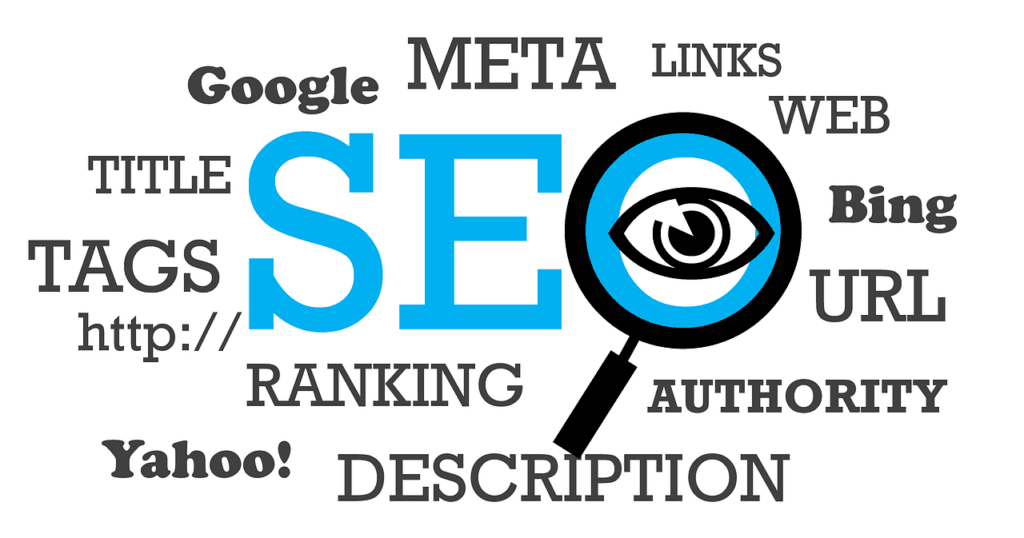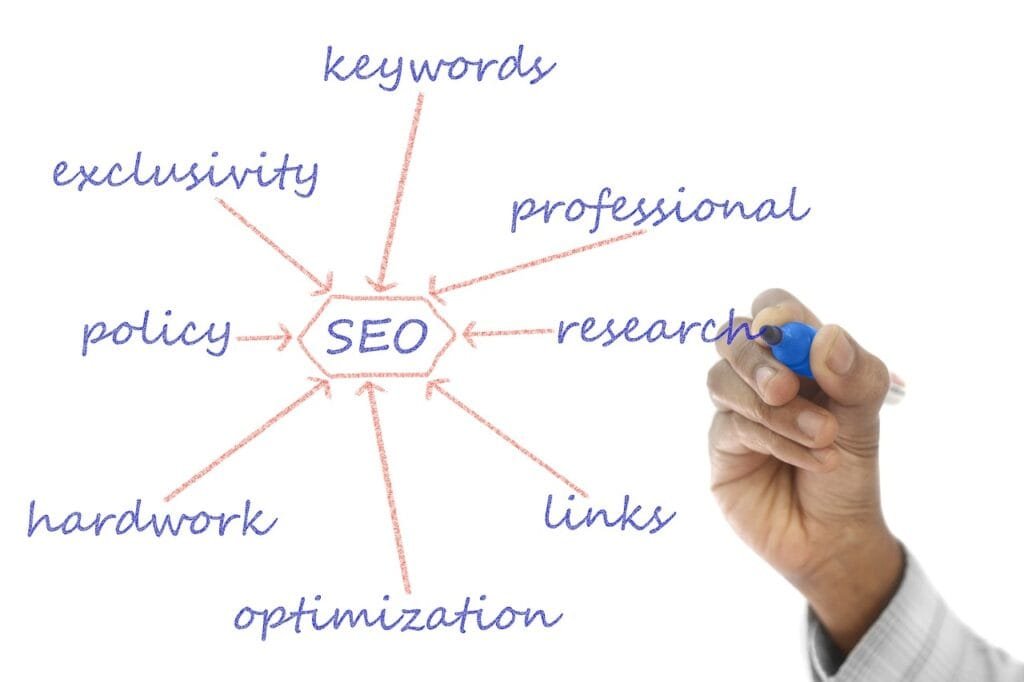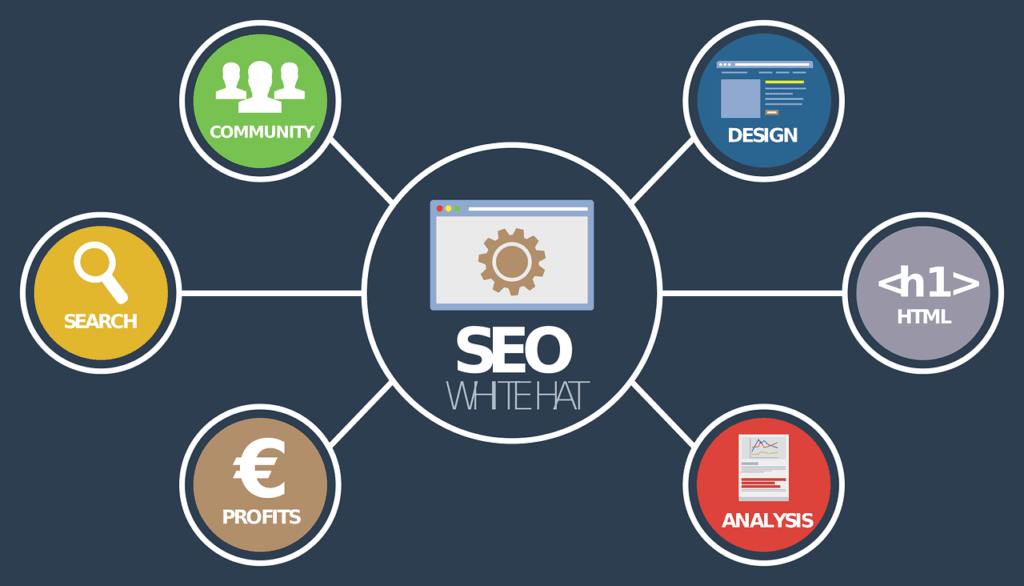This Article has been revised, edited and added to, by Poulomi Chakraborty.
- Introduction: The Power of Chatbots in Biotech
- Understanding Chatbots
- Relevance in the Biotech Sector
- Strategic Integration of Chatbots for Enhanced Research and Development
- Improving Regulatory Compliance Through Automated Systems
- Fostering Collaboration and Knowledge Sharing
- Enhancing Customer Interaction and Engagement
- Streamlining Operations and Reducing Overhead
- The Technical Side of Chatbot SEO
- Leveraging Chatbots for Content and User Engagement
- Chatbots in Clinical Trials and Healthcare
- Real-world Examples: Biotech Companies Leading with Chatbot SEO
- The Future of Chatbots and SEO in the Biotech Industry
- Conclusion
In the ever-evolving landscape of biotechnology, the convergence of cutting-edge technology and effective communication plays a pivotal role in shaping success. Chatbots, powered by artificial intelligence (AI), have emerged as a transformative tool, revolutionizing how biotech companies engage with their audience, provide information, and enhance their search engine optimization (SEO) strategies.
In this comprehensive guide, we will delve into the world of chatbots and SEO in the biotech industry. From understanding the role of chatbots in biotech to the technical aspects of optimizing chatbots for search engines, we will explore the strategies and insights that can empower biotech companies to stay at the forefront of innovation and communication.
Introduction: The Power of Chatbots in Biotech

Understanding Chatbots
Chatbots, powered by artificial intelligence (AI), are software applications designed to simulate human conversation. They interact with users through text or voice, providing information, answering questions, and even performing tasks. Chatbots have evolved from simple rule-based systems to sophisticated AI-driven agents capable of understanding natural language and context.
Relevance in the Biotech Sector
In the biotech industry, where complex scientific information is communicated daily, chatbots have found a significant role to play. Here’s why chatbots are particularly relevant in the biotech sector:
- 24/7 Accessibility: Chatbots are available round the clock, making them ideal for disseminating critical information and providing support to researchers, clinicians, and patients at any time.
- Efficient Communication: Biotech companies often deal with intricate concepts and research findings. Chatbots can simplify and explain these complexities in a user-friendly manner.
- Streamlined Customer Support: Whether it’s answering inquiries about products or assisting with technical issues, chatbots can enhance customer support efficiency.
- Data Collection: Chatbots can gather valuable data and feedback from users, aiding in market research and product development.
Strategic Integration of Chatbots for Enhanced Research and Development
In the rapidly evolving biotech sector, chatbots have emerged as pivotal tools, not just for communication but as integral components of research and development. For startup founders, incorporating chatbots strategically can accelerate the pace of innovation while managing costs effectively.
Chatbots programmed with advanced AI capabilities can handle preliminary data analysis, sift through extensive genetic databases, and simulate potential outcomes of experimental treatments.
This proactive utilization of chatbots in the early stages of research can significantly reduce the time researchers spend on routine data queries, allowing them to focus more on critical thinking and complex problem-solving.
Improving Regulatory Compliance Through Automated Systems
Navigating the complex regulatory landscape is a formidable challenge for biotech startups. Chatbots can be programmed to understand and monitor regulatory requirements across different regions, providing startups with a constantly updated framework within which they must operate.
This application of chatbots is especially beneficial when entering new markets or scaling operations. By automating compliance checks, startups can avoid costly violations and enhance their credibility in the industry.
More importantly, these AI-driven tools can be trained to alert founders and managers to significant regulatory changes, ensuring that the company adapts its operations to comply with new laws swiftly.
Fostering Collaboration and Knowledge Sharing
A crucial aspect of leveraging chatbots in biotech startups is to enhance collaboration across various departments and with external partners. Chatbots can act as bridges, facilitating seamless communication between researchers, marketing teams, and supply chain managers, ensuring that all parties stay informed about project statuses and laboratory results.
Furthermore, these intelligent systems can extract and compile information from different discussions and meetings, creating a central knowledge base that is accessible to all team members. This centralized pool of knowledge encourages transparency and can be invaluable during project reviews or when onboarding new employees.
Enhancing Customer Interaction and Engagement
For biotech startups, explaining complex products and services to potential customers and investors is often challenging. Chatbots can be designed to deliver detailed, understandable explanations of biotechnological products and their benefits.
More sophisticated chatbots can engage in interactive dialogues, answering questions in real-time, and adjusting their responses based on the user’s knowledge level. This not only improves customer satisfaction but also increases the likelihood of securing investments, as stakeholders can easily understand the value and functionality of the products.
Streamlining Operations and Reducing Overhead
Implementing chatbots in operational roles within biotech startups can lead to substantial cost savings. For instance, chatbots can manage routine administrative tasks such as scheduling, inventory management, and customer service.
This automation allows the startup to allocate human resources to more critical areas, enhancing productivity and innovation. Moreover, chatbots can be integrated with IoT devices in the lab, providing real-time monitoring of experimental conditions and alerting staff to any anomalies that could jeopardize the results, thereby safeguarding valuable research.
By strategically incorporating chatbots in these areas, biotech startups can not only streamline their operations but also gain a competitive edge in a field where innovation and efficiency are paramount. The adaptive nature of chatbots means they can continually evolve with the startup, progressively enhancing their capabilities and applications in the biotech industry.
The Technical Side of Chatbot SEO

Effective chatbot SEO involves several technical considerations to ensure that search engines can crawl, index, and rank your chatbot content. Here are key technical aspects of chatbot SEO:
Structured Data for Chatbots
Structured data markup, often implemented using Schema.org, is essential for chatbots to communicate with search engines effectively. It helps search engines understand the context and content of your chatbot conversations.
Key Considerations:
- Schema Markup: Implement schema markup to provide structured information about your chatbot’s content. This includes details about products, services, FAQs, and more.
- Rich Snippets: Utilize structured data to enable rich snippets in search results. For example, a chatbot that offers product recommendations can use structured data to display product ratings and prices directly in search results.
Natural Language Processing (NLP)
Natural Language Processing is at the heart of chatbot functionality. It enables chatbots to understand and respond to user queries in a human-like manner. For SEO, NLP ensures that chatbots can interpret and generate content optimized for search engines.
Key Considerations:
- Conversational Keywords: Incorporate conversational keywords and phrases into your chatbot responses. These are more aligned with how users ask questions and search online.
- Content Relevance: Ensure that your chatbot’s responses are relevant to user queries. NLP helps in context-aware responses, which can positively impact SEO.
- Data Integration: Connect your chatbot to structured data sources to provide accurate and up-to-date information. This is crucial for delivering valuable content to users.
Mobile Optimization for Chatbots
Given the prevalence of mobile devices, chatbots must be optimized for mobile platforms. Mobile optimization is not only user-friendly but also a key factor in search engine rankings.
Key Considerations:
- Responsive Design: Design chatbot interfaces to be responsive, ensuring that they work seamlessly on various mobile devices and screen sizes.
- Page Speed: Optimize chatbot response times to ensure fast loading on mobile devices. Slow-loading chatbots can lead to poor user experiences and negatively impact SEO.
- Voice Compatibility: As voice interactions become more common, ensure that your chatbot is compatible with voice-activated devices and can deliver voice responses effectively.
Leveraging Semantic Search Capabilities
In the evolving field of SEO, understanding and implementing semantic search principles can greatly enhance the discoverability of chatbots. Semantic search refers to the process of understanding the intent and contextual meaning of search terms.
For biotech startups, this means developing chatbots that not only recognize keywords but also understand the context in which those terms are used. By integrating semantic search capabilities, chatbots can provide more accurate and relevant information to users, which improves user engagement and increases the chances of your chatbot appearing in search results.
Founders can leverage this by incorporating advanced Natural Language Understanding (NLU) technologies that go beyond basic Natural Language Processing (NLP), thereby allowing chatbots to discern user intent more effectively.
Optimizing Chatbot Page Architecture for SEO
While chatbots primarily interact through dialogues, the underlying web page’s structure where the chatbot lives is crucial for SEO. Founders should ensure that the chatbot’s web page is fully optimized with relevant metadata, proper use of headers, and mobile-friendly design.
The architecture should facilitate easy crawling by search engines and include structured data that highlights the chatbot’s purpose and functionalities. This includes setting up appropriate tags for the chatbot’s hosting page and ensuring that all redirects are properly managed to maintain SEO strength.
Furthermore, startups can embed secondary content related to the chatbot’s functions that could rank for related search queries, enhancing overall visibility.
Integrating Chatbots with Web Analytics
To truly refine SEO strategies and understand how users interact with your chatbot, integration with web analytics is essential. By tracking how users engage with the chatbot, startups can gather data on the most frequently asked questions, user satisfaction with the responses, and typical interaction patterns.
This information is invaluable for optimizing the chatbot’s responses for better user engagement and identifying which parts of the conversation may require more detailed answers or better clarity.
Moreover, analytics can reveal how chatbot interactions affect overall website engagement, such as time on site and bounce rate, which are critical metrics for SEO.
Continuous Learning and AI Adaptation
For a chatbot to remain effective in its SEO role, it must continuously learn and adapt based on user interactions. Implementing machine learning algorithms allows the chatbot to improve its conversation skills over time, thereby increasing its ability to engage users and answer queries more effectively.
This ongoing learning process not only enhances user experience but also ensures that the chatbot stays relevant to evolving user needs and search practices. Startups should prioritize developing feedback loops within their chatbots that allow them to iteratively refine and update the AI models underpinning their chatbots based on real-world usage and feedback.
Establishing Cross-Channel SEO Synergies
Chatbots should not exist in isolation but rather be part of a broader SEO strategy that includes social media, email marketing, and other digital touchpoints. For example, promoting the chatbot through social media and linking back to the chatbot’s web page can drive traffic, which in turn boosts SEO.
Similarly, incorporating the chatbot into email marketing campaigns by inviting subscribers to engage with the chatbot can increase its visibility and usage. These strategies not only enhance the chatbot’s SEO performance but also create a cohesive user experience across all digital platforms.
By focusing on these advanced SEO strategies, biotech startups can significantly enhance their chatbot’s visibility and effectiveness, ensuring they remain competitive in a highly dynamic industry. Implementing these practices will require ongoing effort and adaptation, but the payoff in terms of user engagement and search engine rankings can be substantial.
Leveraging Chatbots for Content and User Engagement

Chatbots are not just automated responders; they can be dynamic content creators and powerful engagement tools. Let’s explore how biotech companies can harness the potential of chatbots for content and user engagement:
Chatbots as Content Creators
Chatbots can generate content in real-time based on user queries and interactions. Biotech companies can leverage this capability in various ways:
Key Considerations:
- Dynamic FAQs: Create dynamic FAQ sections within your chatbot. As users ask questions, the chatbot can generate answers and build an evolving knowledge base.
- Research Updates: Share the latest research findings and news in the biotech industry through your chatbot. Keep users informed and engaged with the latest developments.
- Educational Content: Develop chatbot-driven educational modules or tutorials. This can be particularly valuable in explaining complex biotech concepts to a non-technical audience.
Personalization and User Experience
Personalization is a core strength of chatbots. They can tailor responses and content based on user preferences and behavior, creating a customized user experience:
Key Considerations:
- User Profiles: Allow users to create profiles within the chatbot, where they can specify their interests and preferences. The chatbot can then personalize content recommendations.
- Recommendation Engines: Implement recommendation algorithms that suggest relevant articles, resources, or products to users based on their interactions.
- Behavior Tracking: Monitor user behavior and interactions with the chatbot. Use this data to refine content recommendations and improve the user experience.
Data-Driven Decision Making
Chatbots can collect valuable data on user behavior, preferences, and frequently asked questions. Biotech companies can use this data to inform content strategies and marketing efforts:
Key Considerations:
- Content Planning: Analyze chatbot data to identify trending topics and user interests. Use this insight to guide your content creation strategy.
- Marketing Insights: Understand which products or services are most in demand based on chatbot interactions. Tailor your marketing campaigns accordingly.
- User Feedback: Encourage users to provide feedback on the chatbot’s content and usability. Use this feedback to make continuous improvements.
Creating an Interactive Learning Environment with Chatbots
In the biotech industry, where the transfer of complex knowledge is crucial, chatbots can transform the way information is delivered by creating an interactive learning environment. For startup founders, this means designing chatbots that not only respond to queries but also engage users in educational activities.
Imagine a chatbot that simulates scenarios or provides step-by-step laboratory procedures through interactive sessions. These sessions can help users, especially those new to biotechnology, grasp difficult concepts or procedures by engaging them in a dialogue that adjusts to their pace of learning.
This strategy not only enriches the user experience but also boosts the perceived value of the chatbot, enhancing user retention and satisfaction.
Developing a Proactive Content Delivery System
Startups can greatly benefit from chatbots that not only react to user inquiries but also proactively deliver content based on user behavior and preferences. By integrating analytics and machine learning, chatbots can predict the information users might require next and offer it without the user having to ask explicitly.
For example, if a user is frequently accessing cholesterol drug information, the chatbot could begin to offer updates on new research findings related to cholesterol management.
This proactive approach in content delivery ensures that users remain engaged with the chatbot, increasing the time they spend interacting with your platform, which is a positive signal for SEO.
Driving Engagement Through Customization and Feedback
Personalizing User Interactions for Greater Engagement
To make chatbot interactions more engaging, biotech startups should focus on customization. This involves configuring chatbots to recognize return users and tailor conversations based on previous interactions.
For instance, if a user previously asked about a specific clinical trial, the chatbot could provide updates on that trial during the user’s next visit. This level of personalization makes users feel understood and valued, thereby enhancing their engagement with the chatbot.
Utilizing User Feedback to Refine Chatbot Functions
An effective way to ensure that chatbots continue to serve users well is to incorporate mechanisms for collecting user feedback directly through the chatbot interface. This feedback should be about the user’s experience with the chatbot, including the relevance and helpfulness of the information provided and the overall interaction quality.
Founders can use this feedback to continuously improve the chatbot’s accuracy and interaction style. Regular updates based on user feedback also keep the content fresh and relevant, which is beneficial for both user satisfaction and SEO.
Expanding Reach Through Multi-Platform Integration
Extending Chatbot Presence Across Multiple Digital Platforms
To maximize the impact of chatbots, biotech startups should consider integrating their chatbot services across multiple platforms. This might include social media platforms, mobile apps, and the company website.
Each platform offers unique engagement opportunities and attracts different user segments. By making chatbots accessible in various environments, startups can reach a wider audience, gather more diverse data, and enhance the overall effectiveness of their digital marketing strategy.
This cross-platform presence not only improves user accessibility but also positively impacts SEO as it drives traffic back to the startup’s main site from various sources.
By implementing these strategies, biotech startups can leverage chatbots not just as tools for improving SEO but as dynamic platforms for content delivery and user engagement.
This holistic approach to chatbot integration will empower startups to build stronger relationships with their audience, fostering loyalty and driving growth in the competitive biotech industry.

Related: Check out our free SEO suite

Chatbots in Clinical Trials and Healthcare
Chatbots are making significant strides in the healthcare and clinical trial sectors, offering innovative solutions to improve patient engagement, streamline processes, and provide valuable insights. Let’s delve into how chatbots are transforming clinical trials and healthcare:
Enhancing Patient Engagement
Patient engagement is crucial in clinical trials, and chatbots play a pivotal role in this context:
Key Considerations:
- Educational Support: Chatbots can provide patients with information about clinical trials, including eligibility criteria, potential benefits, and risks. This educates patients and helps them make informed decisions.
- Appointment Reminders: Automated appointment reminders via chatbots reduce no-show rates and ensure that patients adhere to trial protocols.
- Patient Monitoring: Chatbots can collect data from patients, such as symptoms or side effects, on a regular basis. This real-time data helps researchers monitor patient well-being and make informed adjustments.
Streamlining Clinical Trial Processes
Chatbots streamline administrative tasks in clinical trials, freeing up resources for more critical activities:
Key Considerations:
- Recruitment and Screening: Chatbots can assist in patient recruitment by pre-screening potential participants. This accelerates the recruitment process and ensures that only eligible patients are enrolled.
- Data Collection: Chatbots can collect patient-reported outcomes efficiently and securely. This reduces the administrative burden on both patients and researchers.
- Support for Investigators: Chatbots can provide investigators with quick access to trial-related information, study protocols, and even assist with adverse event reporting.
Ethical Considerations
While chatbots offer numerous advantages in clinical trials and healthcare, ethical considerations must be addressed:
Key Considerations:
- Informed Consent: Patients must be adequately informed about the chatbot’s role in the trial and provide informed consent for data collection and interaction.
- Data Privacy: Ensure that patient data collected by chatbots is stored securely and complies with data privacy regulations like HIPAA.
- Transparency: Be transparent about the limitations of chatbots. Patients should know when they are interacting with a bot and when they are speaking with a human.
Streamlining Data Collection and Analysis with AI-Driven Chatbots
In clinical trials, the efficient management of vast amounts of data is crucial. Startups in the biotech sector can leverage AI-driven chatbots to automate and streamline the collection and analysis of trial data. These chatbots can be programmed to interact with trial participants, collecting real-time data on symptoms, medication adherence, and side effects.
Furthermore, they can analyze this data to identify trends and anomalies, providing researchers with actionable insights much faster than traditional methods. This real-time processing and analysis can significantly accelerate the decision-making process in clinical trials, enabling quicker adjustments to protocols and treatment plans based on emerging data.
Enhancing Patient Compliance and Engagement
Patient compliance is a significant challenge in clinical trials, directly affecting the validity and success of the research. Chatbots can play a crucial role by engaging with participants more frequently and in a personalized manner, thus encouraging greater compliance with trial protocols.
For instance, chatbots can send reminders for medication intake and schedule regular check-ins to assess participants’ health status, reducing the likelihood of dropout and improving data integrity. These interactions, driven by a friendly and interactive chatbot, can make participants feel more connected to the trial, fostering a sense of involvement and responsibility.
Facilitating Remote Monitoring and Virtual Trials

Implementing Chatbots for Remote Patient Monitoring
As the biotech industry increasingly moves towards virtual and decentralized clinical trials, the role of chatbots in remote patient monitoring becomes more prominent. Startups can deploy chatbots as part of a broader telehealth platform, where they function as the first point of contact for patients.
These chatbots can assess symptoms, provide basic guidance, and escalate cases to human healthcare providers when necessary. By integrating chatbots with other remote monitoring technologies, such as wearable health devices, startups can gather comprehensive health data in real-time, facilitating continuous patient monitoring without the need for frequent on-site visits.
Pioneering Virtual Trial Solutions
Virtual trials represent a frontier in clinical research, and chatbots are at the heart of this innovation. By implementing chatbots, startups can manage virtual trials more efficiently, allowing participants to complete many aspects of the trial from the comfort of their homes.
Chatbots can guide participants through the process of self-administration of treatments, recording of results, and provision of feedback. This not only makes participation easier but also expands the reach of trials to include a broader demographic, potentially speeding up recruitment and reducing the geographical limitations of traditional site-based studies.
Optimizing Resource Allocation with Chatbot Automation
Reducing Administrative Burdens Through Chatbot Integration
In clinical trials, administrative tasks often consume a significant amount of resources that could be better spent on research and patient care. Chatbots can automate many of these routine tasks, such as scheduling appointments, managing consent forms, and answering frequently asked questions from trial participants.
This automation frees up valuable human resources, allowing research teams to focus more on the critical aspects of the trial and patient interaction. For startups, this efficient allocation of resources can be a game-changer, reducing overhead costs and enhancing the overall efficiency of the trial process.
By leveraging chatbots in these innovative ways, biotech startups can not only enhance the efficiency and effectiveness of clinical trials but also pave the way for more patient-centered approaches that could define the future of clinical research.
The strategic use of chatbots in clinical trials and healthcare represents a significant opportunity for startups to differentiate themselves and lead in the adoption of new technologies in the biotech industry.
Real-world Examples: Biotech Companies Leading with Chatbot SEO
Let’s explore real-world examples of biotech companies that have harnessed the power of chatbots to enhance their SEO strategies and engage their audiences effectively:
Pfizer: Vaccine Information Chatbot
During the COVID-19 pandemic, Pfizer launched a chatbot on its website to provide users with real-time information about the vaccine. The chatbot answered frequently asked questions, addressed concerns, and guided users to relevant resources. By optimizing this chatbot for SEO, Pfizer ensured that its vaccine information was easily discoverable through search engines, providing a trusted source of information during a critical time.
Key Takeaway: Pfizer’s vaccine information chatbot not only served as a valuable resource but also improved the company’s search engine visibility, enabling it to reach a wider audience.
Roche: Clinical Trial Recruitment
Roche, a leading biotech company, implemented a chatbot on its clinical trial recruitment page. Prospective participants could interact with the chatbot to learn about ongoing trials, eligibility criteria, and next steps. The chatbot’s responses were structured and optimized for search engines, ensuring that individuals searching for clinical trial opportunities could easily find relevant information.
Key Takeaway: Roche’s chatbot not only simplified the recruitment process but also contributed to improved SEO by making clinical trial information more accessible.
Gilead Sciences: Medication Information
Gilead Sciences, known for its work in antiviral medications, integrated a chatbot into its website to provide medication information to healthcare professionals and patients. Users could inquire about drug interactions, dosages, and side effects. By optimizing the chatbot’s responses for SEO, Gilead Sciences ensured that healthcare professionals and patients could find accurate and detailed medication information through search engines.
Key Takeaway: Gilead Sciences’ medication information chatbot not only served as a knowledge resource but also enhanced its online presence by improving SEO.
These real-world examples demonstrate how biotech companies can leverage chatbots to provide valuable information, engage their audiences, and simultaneously enhance their SEO strategies. The integration of chatbots into digital marketing and communication efforts allows biotech companies to reach a broader and more informed audience.
The Future of Chatbots and SEO in the Biotech Industry

The future of chatbots and SEO in the biotech industry holds immense potential for innovation and transformation. Here’s a glimpse of what lies ahead:
Advanced AI and NLP Integration
Chatbots will become even more sophisticated in understanding user intent and context. Advanced Natural Language Processing (NLP) models will enable chatbots to have more nuanced and human-like conversations, improving user engagement and SEO.
Multilingual Chatbots
As biotech companies operate on a global scale, chatbots that support multiple languages will become essential. Multilingual chatbots will facilitate effective communication with a diverse audience, contributing to improved SEO on a global scale.
Voice-Activated Chatbots
With the rise of voice search, voice-activated chatbots will become prevalent. These chatbots will interact with users through voice commands, providing information and services seamlessly. Optimizing chatbots for voice search SEO will be a priority.
Personalized Healthcare Chatbots
In the healthcare sector, chatbots will evolve into highly personalized health assistants. They will provide personalized health advice, medication reminders, and even facilitate telemedicine appointments. Personalization will enhance user engagement and SEO.
Ethical and Privacy Compliance
As chatbots collect and process sensitive health data, stringent ethical and privacy considerations will be paramount. Biotech companies will need to ensure that their chatbots adhere to data protection regulations and maintain transparency with users.
Integration with Wearable Devices
Chatbots will integrate seamlessly with wearable devices, such as smartwatches and fitness trackers. They will provide real-time health monitoring and information delivery, further enhancing user engagement and SEO opportunities.
The future of chatbots and SEO in biotech is promising. As chatbots become more intelligent and versatile, they will play an increasingly integral role in disseminating information, engaging users, and optimizing content for search engines.
Conclusion
As we look towards the future of biotechnology, it is clear that chatbots and SEO will continue to play pivotal roles. The integration of advanced AI and the strategic optimization of chatbots for search engines are not just enhancements but essential components of a robust digital strategy in biotech. These technologies enable companies to efficiently communicate complex information, engage with diverse audiences, and maintain a competitive edge in a rapidly evolving industry.
For biotech startups, leveraging the full potential of chatbots means not only deploying them as tools for customer interaction but also integrating them deeply with SEO practices to improve visibility and user engagement. The synergy between chatbots and SEO strategies can drive significant advancements in how biotech companies interact with their stakeholders, streamline operations, and present their innovations to the world.
As these technologies evolve, they will undoubtedly uncover new opportunities for startups to innovate and grow. Embracing these changes and continuously adapting digital strategies will be key for startups aiming to thrive and lead in the dynamic landscape of biotechnology. This proactive approach will ensure that biotech firms are not just participants but leaders in the digital age.
Read Next
- Keyword Research for Startup YouTube Channel: Video SEO Strategies
- Keyword Clustering: Organizing Keywords for Content Strategy
- Using Google Trends for Trending Keyword Opportunities
- How to Use Seed Keywords to Expand Your Startup
- Creating a Keyword Research Workflow for Startup Success






















Comments are closed.